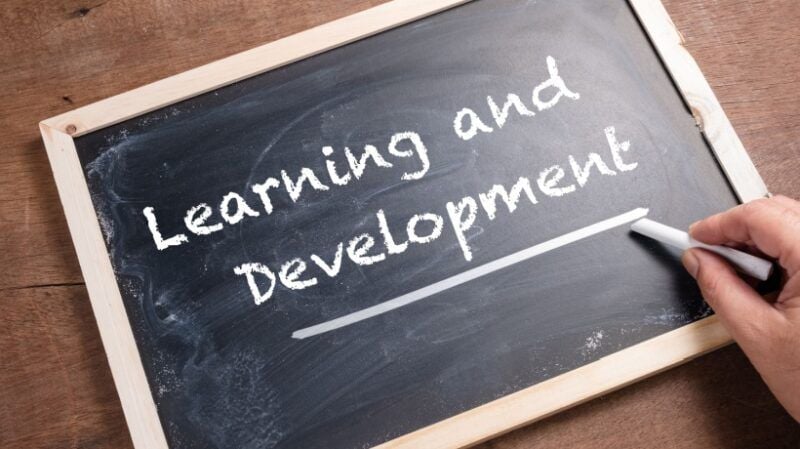
The New Age Of L&D: The Heart Hasn’t Changed
Allow me share something I have actually been seeing up close: Knowing and Advancement (L&D) isn’t simply developing, it’s changing at a rate most of us haven’t experienced prior to. Consider it. 5 years earlier, we were speaking about online learning as a support system. Today, it’s the foundation of how organizations reskill, retain, and encourage their workforce. Functions are shifting, abilities are frequently being redefined, and growth strategies look absolutely nothing like the ones we built a years ago.
As an L&D professional, I often hear leaders ask: “What are one of the most sensible innovations I can pursue my workforce? Just how do I also know what skills to focus on?” If you’ve been wrestling with these inquiries, you’re not the only one. Let’s unbox what’s occurring and where you can concentrate your power.
1 From Work Duty To Abilities: The Shift That Modifications Whatever
We made use of to develop discovering around fixed work descriptions. Today, job doesn’t fit nicely into those boxes anymore. Organizations are relocating towards skills-first techniques. Why? Since abilities are the true money of growth.
- Ability taxonomies and frameworks (like those constructed into modern-day LMS platforms) are helping companies identify what’s missing today and what will certainly be crucial tomorrow.
- Inner ability marketplaces are emerging, where staff members are matched to tasks based on abilities instead of task titles.
- For you as a leader, this suggests reskilling isn’t a side project; it’s your strongest retention method.
2 AI Is Below, But It Demands Guardrails
AI is no longer advanced; it’s currently inside your LMS and learning method, pushing learners with personalized referrals. And when done right, it feels like magic.
- Customized paths
AI evaluates student habits and suggests courses straightened with occupation desires. - Time-saving automation
Admin jobs like registration, reporting, and comments loopholes are becoming simpler. - Ability presence
AI-powered dashboards provide leaders clearness on labor force preparedness.
However here’s my care: AI is only as solid as the information and administration behind it. Wonder, experiment, however also ask suppliers difficult inquiries about openness, prejudice, and data security.
3 Skills-Based Discovering Satisfies Human-Centered Design
While modern technology can scale, human-centered style makes it stick. The advancements I’m most delighted about are the ones that mix tech with compassion:
- Microlearning and pushes
Small, just-in-time ruptureds of expertise that respect students’ active routines. - Knowing in the circulation of work
Assimilations with MS Teams, Slack, or CRMs where workers currently invest their time. - Career-linked knowing
Advancement intends that straight attach abilities discovered to promotions or new opportunities.
These aren’t just “nice-to-haves.” They’re coming to be anticipated.
4 Immersive Knowing Is No More An Experiment
Virtual Fact (VR) and Enhanced Reality (AR) were once buzzwords. Today, they’re practical tools, in addition to much-utilized simulations, scenario-based understanding, and gamification, specifically for remote and worldwide groups.
- Visualize a frontline worker practicing safety protocols in VR, safe.
- Or a brand-new supervisor stepping into a gamified simulation to exercise leadership conversations.
These immersive strategies raise retention and confidence, specifically in high-stakes duties. And the good news? Prices are reducing, making them extra attainable for a larger variety of companies.
5 Collaboration Is The New L&D Superpower
Right here’s the truth: in the new age, L&D can’t prosper in a silo anymore. The most impactful programs I have actually seen were born from strong collaboration in between HR, IT, and magnate.
- HR supplies the lens of ability and culture.
- IT guarantees systems incorporate perfectly.
- Magnate link discovering to technique and growth objectives.
When these voices come together, discovering comes to be an organization motorist, not just a human resources feature.
If You’re Unclear About Abilities Or Concerns, Begin Right Here
Several leaders tell me, “I’m not also clear regarding which abilities matter many.” That’s entirely understandable. The landscape in this new age of L&D is noisy. Right here’s a simple approach I recommend:
- Listen to your business approach
What’s changing in your market, item, or customer expectations? - Take a look at your labor force information :
Where are people leaving? Which groups are struggling? - Beginning little with pilots
Choose one area, like electronic fluency, management preparedness, or client experience, and run a focused program. Action, find out, range.
Bear in mind: you do not have to do whatever simultaneously. Also little, willful steps can develop huge ripples in society and efficiency.
Final Idea: The Heart Of L&D Hasn’t Altered
Yes, the devices, functions, and techniques are moving dramatically. But at the heart of it, also the new age of L&D is still about unlocking human capacity. As CLOs and L&D leaders, our job is to produce environments where individuals feel qualified, sustained, and motivated to expand. Whether with AI-driven personalization, immersive simulations, or just better conversations between supervisors and groups, the objective stays the exact same: to help individuals thrive to ensure that companies can thrive.
If you’re curious about which advancements could function best for your workforce, begin checking out. Try something small, determine the impact, and do not be afraid to repeat. Since in 2025, one of the most successful L&D leaders won’t be the ones that did every little thing, they’ll be the ones who moved with purpose.